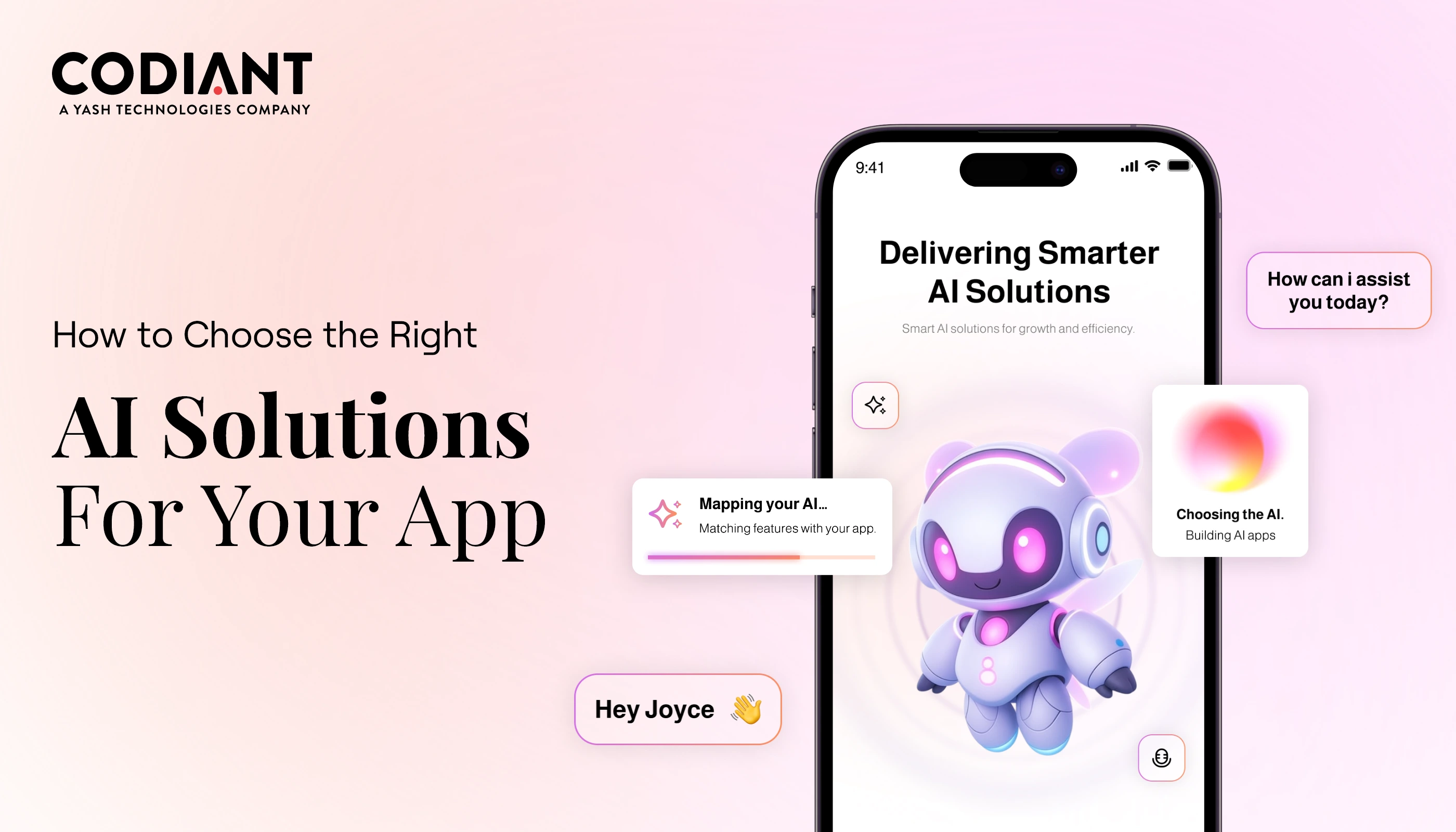How to Develop an Education and eLearning App
Table of Contents
Subscribe To Our Newsletter

“Tell me and I forget, teach me and I may remember, involve me and I learn.” -Benjamin Franklin
Education is the grass-root of any civilized human being. The divine culture of imparting education and learning through teachers or educators has been rolling for hundreds of years and has remained an unchanging, moral necessity. What has only changed in time is the way of imparting education.
What belonged to chalks and board shifted to whiteboards, and projectors and now we are living in the present where we have virtual classrooms, eLearning apps, and educational websites.

Now reflecting on the current state, the COVID time! The biggest driver of digital transformation yet that has disrupted every sector where education is no exception. No, during and post-COVID, e-Learning App Development has soared like an inflated balloon, leaving no room for an option but only a compulsion or say a ‘new norm.’So, let’s start by understanding the most vital stages of the eLearning app. In this blog, you will learn:
- Types of eLearning Apps
- Key Features of an eLearning App
- Top Competitors
- Technology Stack
- The Total Cost Required For eLearning App Development
Types of e-Learning Apps
1. Courseware App
These type of apps helps students build skills with online courses that have videos as well as text and runs only within the app. The best example of this app is Coursera, edX.
2. Classroom Aids
This software platform is used in distance learning classrooms and school classrooms. To impart the education the course content is projected on whiteboards or white screen. An example of it is Google Classroom.
3. Assessment Software
Assessment software is mainly used by educational professionals to create and administer tests to students via a digital platform. The software provides instructors with a format for writing questions and inserting answers, which in turn allows students to take assessments through quizzes, tests, and exams via a website portal or mobile app. E.g. StudyBlue.
4. Educational Purpose Software
Created for a specific subject or domain education and learning application development includes on-demand learning and training for diverse sectors like healthcare, corporate learning, pandemic or crisis management, and more. These types of apps have extensive discipline knowledge and focused learning.
5. On-Demand Learning App
The most popular example of this type of app is the on-demand tutor app. These types of apps allow tutors and students to connect and take online classes via real-time video calling built in the app. E.g. Everly, Chegg tutors, Flipclass, etc.
6. Memorization Apps
These types of eLearning apps use memorization techniques for a faster and more long-lasting memory. Generally, they use flashcards, and built-in audio to recite words.
7. Exam Preparation Apps
These apps come in different types such as tests and quizzes, flashcards, and databases with materials. E.g. ExamPrep, SAT Up, and Gradeup.
Essential Features of an eLearning App
1. Online Courses
This feature allows students to access hundreds of courses (paid or free) and gain specializations developed by colleges and universities.
2. Video-based Content
This feature allows students to listen to pre-recorded video lessons that are saved topic wise by instructors in the app. The video formats can be any of these types:
- Animated videos featuring infographics and text
- Scenarios Or Story-Based Videos Featuring People
- Explainer Videos Featuring Experts
- Videos Featuring Kinetic Text And Videos In The Background
- Whiteboard Animation videos
- Interactive video content
These types of videos allow students to take classes anytime, rewind, or fast forward, giving full liberty to students.
3. Interactive Content
The interactive eLearning apps are crafted by making the learning process more engaging and take full advantage of interactive tools to make learning fun and engaging. The types of formats include:
- Quick brain teaser that triggers the cognitive process
- Interactive flashcards and newsletter
- Game-based learning via classroom or parental collaboration
4. Reading Material
This feature enables you to add ebooks, research, and pages (realistic page-turning); it can be available to read at any time, and users can bookmark, categorize, highlight, adjust the font size and choose a custom font style.
5. Activities and Events
This feature will help you promote quality learning via activities, templates and tutorials. It can be in the form of an infographic template, photo comic strips, stop motion animation, interactive digital posters, virtual walking tour and other creative slides.
6. Live Tutorials and Sessions
Many times simple content-based education app does not serve the purpose. Students need live classes where they can connect with the instructor or teacher in real-time and clear the doubts instantly. Live tutorials, video session like in on-demand tutor apps gives the chance to have live interaction with the tutor and receive answers without any external dependency on in-app course material.
7. Gamification
Make students as well as adults learn in a fun way. Many organizations are using this gamified feature to make learning fun and exciting for everyone. Say like TedEd creates entertaining videos for all ages and other gamified apps like this make learning languages, music, history, art, and coding in fun way. Integrating this feature will allow you to attract more users and make them learn topics delightfully and engagingly.
8. Online Quizzes, Mock Tests and Exams
While your app delivers education through diverse formats, it’s equally important to measure how effectively learners grasp the content. Integrating interactive quizzes, mock tests, and assessments can help track student progress and highlight areas for improvement. With EngageForm, educators can effortlessly create interactive feedback forms and performance evaluations that deliver deeper insights into each learner’s understanding and overall learning journey.
9. Social Media Integration
By integrating social media channels like Facebook, YouTube, twitter, Instagram, etc. you can share the links of your uploaded tutorial videos, and audio clips to increase the number of viewers and user base. This increases the engagement rate and motivates people to download the app.
10. Easy Payments
By integrating multiple payment gateways you can assure seamless, easy and quick payments via cards, mwallet and net banking.
11. Notifications
This feature can help you send important and timely alerts and notifications via SMS, email and push to instructors and students and help them take quick actions.
12. Multi-Language
By making your app available in multiple languages you can increase your user base across geographical boundaries.
13. Augmented Reality
AR-based student learning and education apps like Quiver, and Elements 4D use scannable technology for deep learning and connect the topic with multiple learning environments, allowing students to interact with content in a completely new way.
Competitors of eLearning Application
- For Teachers and Students: Kahoot
- For Teacher to Make Announcements: Google Classroom
- For Exam Preparation, contains quizzes, study guides, etc: StudyBlue
- Helps Students Starting from a Class Level: Socrative
- For Solving Mathematical Problems: PhotoMath
- For taking online courses, building skills from universities: Coursera, edX
- A bibliophile-type app: Amazon Kindle
- Video-based learning app: Periodic Table
- Online learning and teaching marketplace app: Udemy
Tech Stack To Build an eLearning App
Mobile SDK: Android and iOS
Frontend iOS Development: Swift, React Native
Frontend Android development: Android studio (Java), React Native
Payments: Braintree, Authorize.net, Paypal, Google Pay, mWallets
Notifications: Twilio, Nexmo
Emails : Mandrill, Sendgrid
Cloud environment: AWS
Real-time Analytics: Hadoop, Spark, BigData, Cisco, IBM
Database: MySQL
Streaming Video : WebRTC
Cost to Develop an eLearning App
The cost of developing an E-learning app depends on various factors:
- Number of features and complexity of app functionalities
- Number of third-party integrations
- Developers and their location
- Hourly rates of the eLearning app development company
- Marketing and SEO expenditures
The total cost to develop an eLearning website depends upon:
- UI/UX development
- Web front-end development
- Web back-end development
- Quality assurance and testing
- Project Management
A Ballpark Figure:
A basic version of the education app costs you around $17000-$20000 (depending upon the features), a complex app with advanced functionalities and features can go up based on the features you opt to integrate.
Featured Blogs
Read our thoughts and insights on the latest tech and business trends
How AI Helps eCommerce Businesses Scale Faster: 10+ Proven Strategies
- December 4, 2025
- Artificial Intelligence E-commerce
Running an eCommerce business today means managing more products, more customers, and more data than most teams can handle manually. As order volumes rise, tasks like customer support, inventory planning, product discovery, and marketing start... Read more
How to Choose the Right AI Solutions for Your Existing App
- December 1, 2025
- Artificial Intelligence
Businesses today are under pressure to move faster, deliver personalized experiences, and operate with greater accuracy. This is why many enterprises and startups are now looking for ways to add AI features to their mobile... Read more
How to Enable AI for Smart Diet Planning and Client Progress Tracking
- November 26, 2025
- Artificial Intelligence
Smart diet planning and consistent progress tracking have become essential in a world where people want faster, more accurate ways to manage their health. Traditional methods like manual calorie counting or generic meal charts often... Read more




